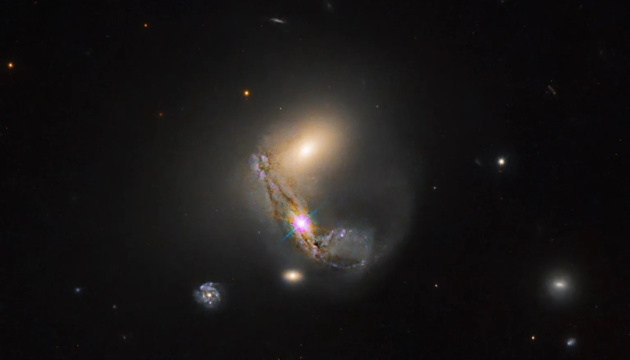NASA’s Hubble Space Telescope discovered the interacting galaxy group LEDA 60847.
This is stated on NASA’s website, Ukrinform reports.
LEDA 60847 is classified as an active galactic nucleus, or AGN. There is a supermassive black hole accumulating matter in the central part of the galaxy. AGN emits radiation across the entire electromagnetic spectrum and shines extremely brightly.
By studying relatively nearby powerful supermassive black holes, astronomers can better understand how they grow and affect galaxies.
This image of LEDA 60847 combines ultraviolet, visible and near-infrared data. Ultraviolet light follows the glow of star nurseries and is used to detect the hottest stars. Visible light shows stars and matter at moderate temperatures and how they appear to our eyes.
Galaxy mergers are a relatively common phenomenon. Most large galaxies are the result of mergers of smaller galaxies. For example, there are traces of other galaxies in the Milky Way, indicating that it is also the result of past mergers. Astronomers currently believe that 5% to 25% of all galaxies are merging.
As reported by Ukrinform, the Hubble space telescope took a photo of the spiral galaxy IC 438 located in the constellation Hare.
Photo: NASA













